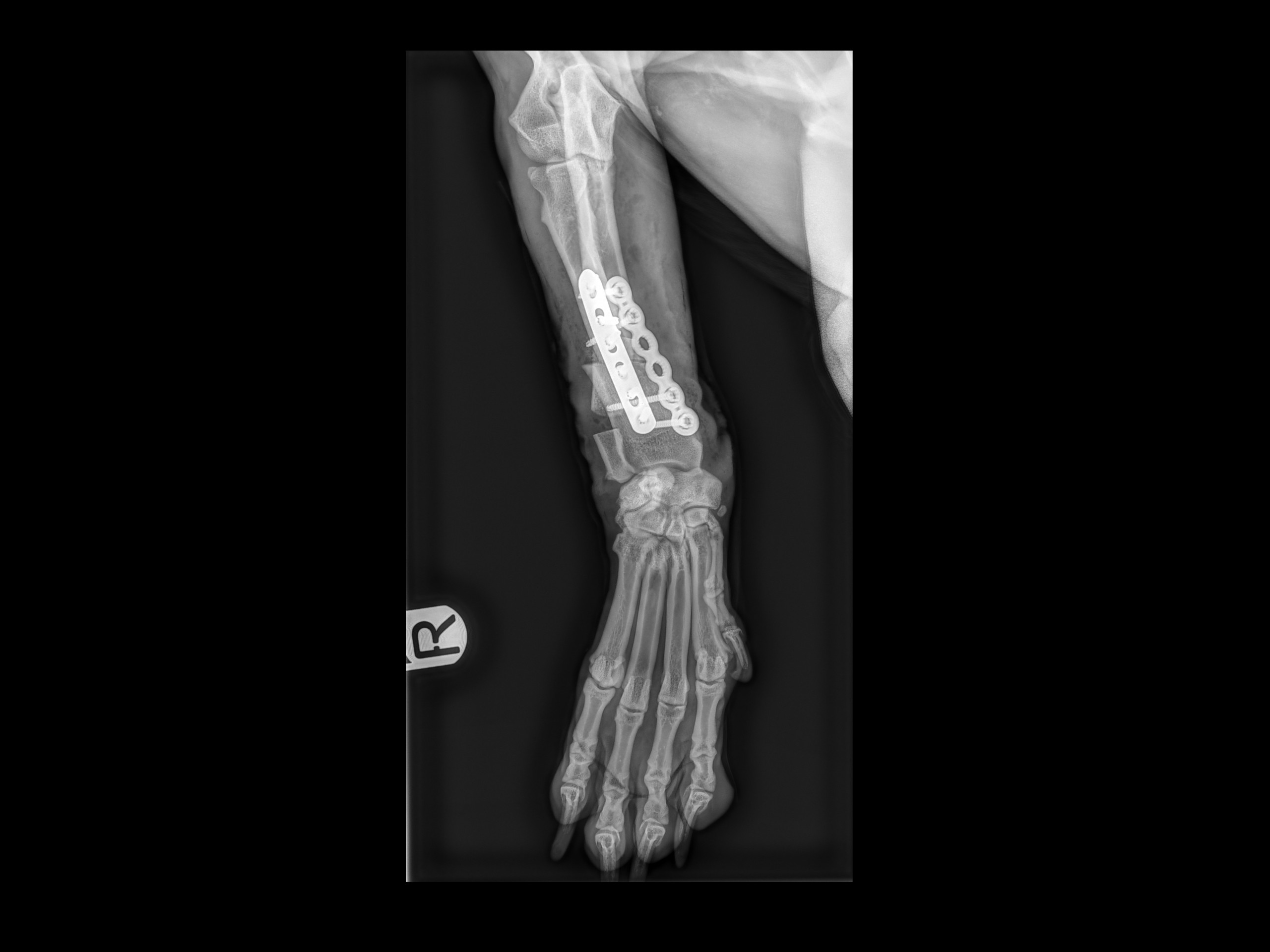Crossbreed Baxter walking without a limp after operation
A lame dog is walking normally for the first time in months after a high-tech operation using 3D printing technology.
One-year-old crossbreed Baxter was struggling badly due to a deformity on one of his front legs.
But vets at the state-of-the-art Vets Now hospital in Manchester used the latest 3D printing technology to produce a model of the leg so they could better plan the operation.
They were also able to use a 3D guide to help make the critical surgical cuts.

The dog was referred by a veterinary practice in Congleton after the owners had become concerned by his increasing lameness.
“We did a CT scan to establish where the deformity was and it showed it to be quite a complicated issue,” said Paul Aldridge, a referral clinician in small animal surgery at Vets Now.
“There was a pronounced bend and twist on his radius and his ulna. It was definitely one of the most complex ones we’ve seen in a while, so we got in touch with Vet3D and sent them the CT images.
“They then 3D printed the leg both as it was then and how we wanted it to look after the procedure. And they also produced custom-made 3D saw guides to use during the surgery.”
Prior to the availability of the 3D printing technology, the team would have relied on X-rays and scans for measurements and to draw up their surgical strategy.
But the 3D printed legs allowed them to make more accurate plans with increased reassurance.
“The software and modelling is so precise it ensures you have the best possible option from one surgery rather than having to make clinical approximations,” said Paul.
“The 3D guide for the saw gives you that additional precision.
“We had the guide to tell us where to cut and once we had it in two, we had another guide to tell us how to line it back up again.
“Two metal plates were used to hold the radius together in its new position. These were bent to shape prior to the surgery and checked against the 3D model.
“That shortens the surgery time and therefore reduces the risk of infections or other problems.”

The procedure took around two hours and Baxter was seen for follow-up checks that showed it had been highly successful.
“The limbs were symmetrical and the walking was much improved, something we would expect to continue during the rehabilitation,” said Paul.
“It has made a remarkable difference to him. It turned out better than we could have expected and in a young dog we have reduced the severity of problems later in life.
“We can see an increasing number of applications for using this 3D printing technology.”
Studies have shown that introducing 3D printing technology into human hospitals can both aid complicated operations and save surgeons’ time.

Vets Now in Manchester is open seven-days-a-week, 365 days a year, to treat any pet emergencies that may occur.
We also have an acclaimed referral service, which provides emergency and specialist care for veterinary practices throughout the Greater Manchester region.
Pet owners and vets in the area can find out more by clicking here.


